Going against the grain of expectations, Abu Kalam Shamsuddin has created a microcosm within his art, bent to unwavering perseverance. Currently presiding as an assistant professor, Drawing and Painting Discipline at the Institute of Fine Arts, Khulna University, Abu Kalam Finished his Bachelors and Masters in Fine Arts from Rajshahi University, currently he is pursuing a PhD whilst balancing his passion for art.
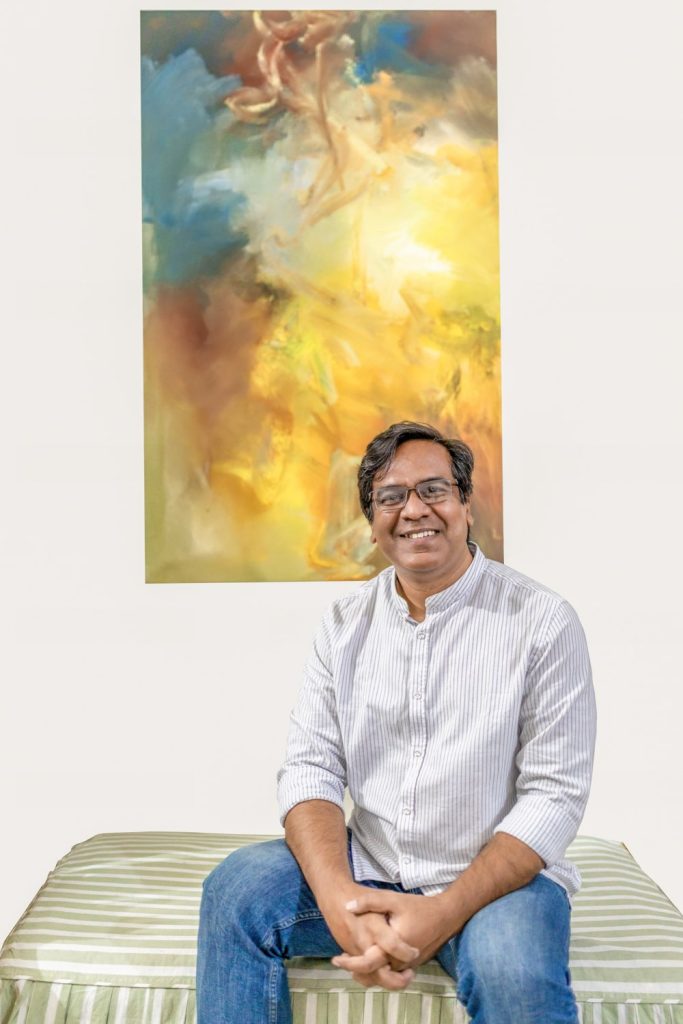
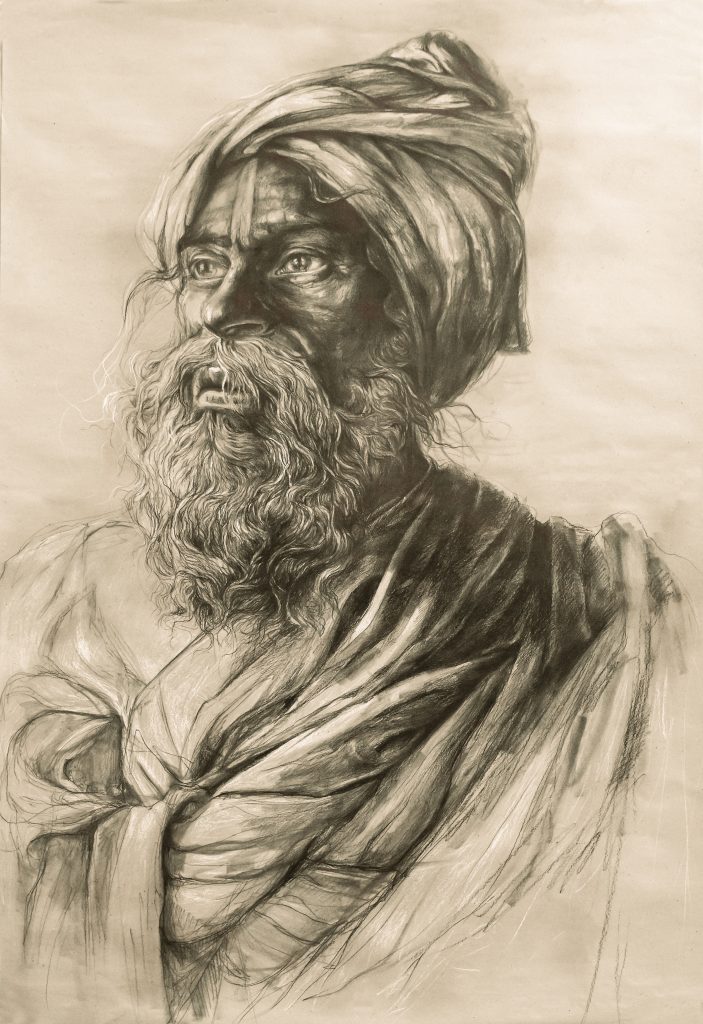
The multifaceted artist states, “While doing my research, I often find myself in various situations and environments which actually drives me into my art more. It is always my goal to ensure that my art has a positive influence on people’s lives. I’ve always had a fixation on art. Even when I was growing up in Rajshahi, my friends and neighbours, like most kids, would jump at every opportunity to rush outside. I too often joined them, but my priorities always remained with my art. Similar to other parents, my parents too maintained a rigid schedule concerning my education. However, before occasions, such as the night before Eid, or family functions, I was allotted time to enjoy myself. I spent all of that time, painting.”
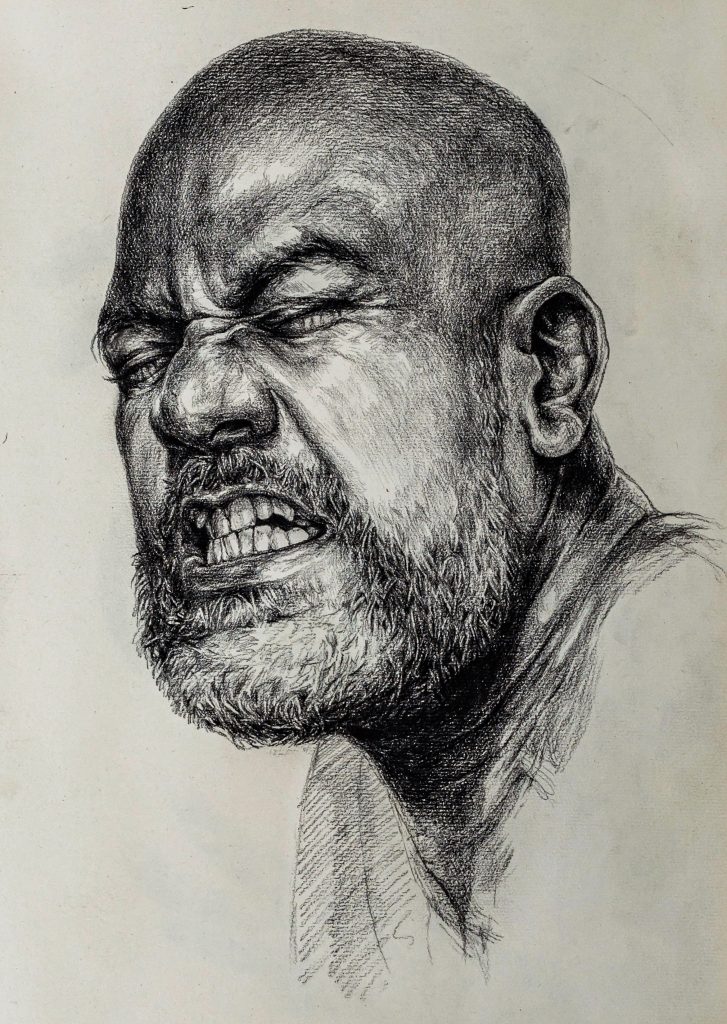
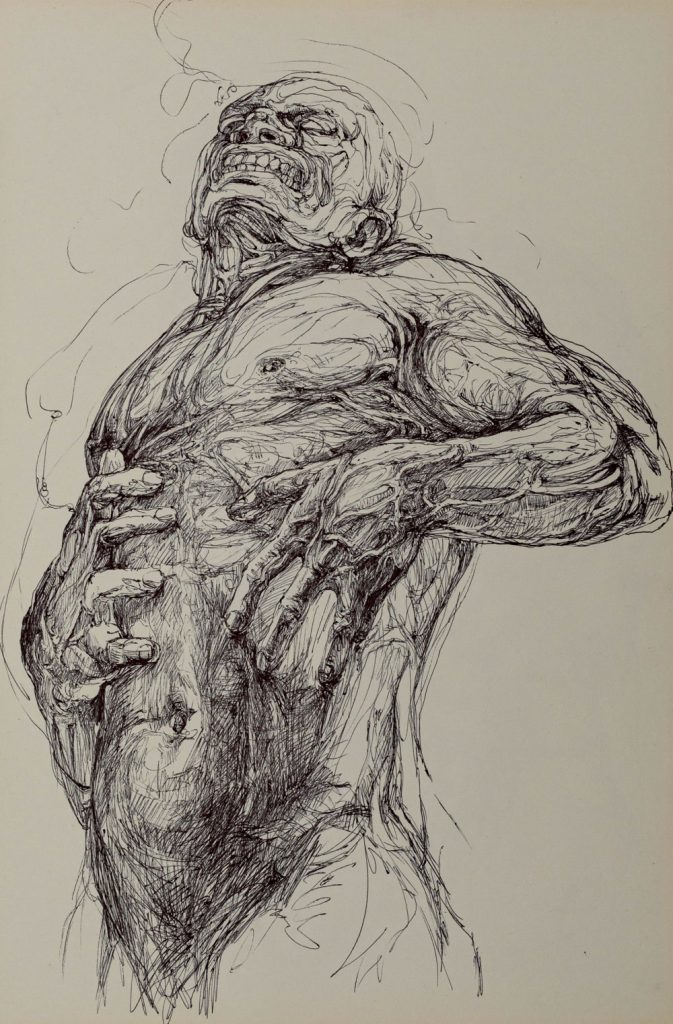
Finding himself thrust towards more ‘practical’ fields of interest as is the case for many, Shamsuddin had once found himself studying for university exams to eventually study engineering. Abu Kalam, fondly speaking of an incident that changed the trajectory of life, states, “prior to my university admission exam, I ran into one of my relatives. He enquired what I was doing at the time and when I mentioned I was planning to pursue engineering, he looked at me and said, `you’re going to be a cricketer, and you’re practicing football. You’ve always had a natural talent and inclination towards art. You should follow that path and pursue your higher education in art, not anything else.’ This statement struck quite a chord with me, and finally I took the admission exams for the Department of Fine Arts at Rajshahi University. I came in second, afterwards my father conceded, giving me his blessing so that I may maintain my love for art as a career, the same way I had as a passion.”
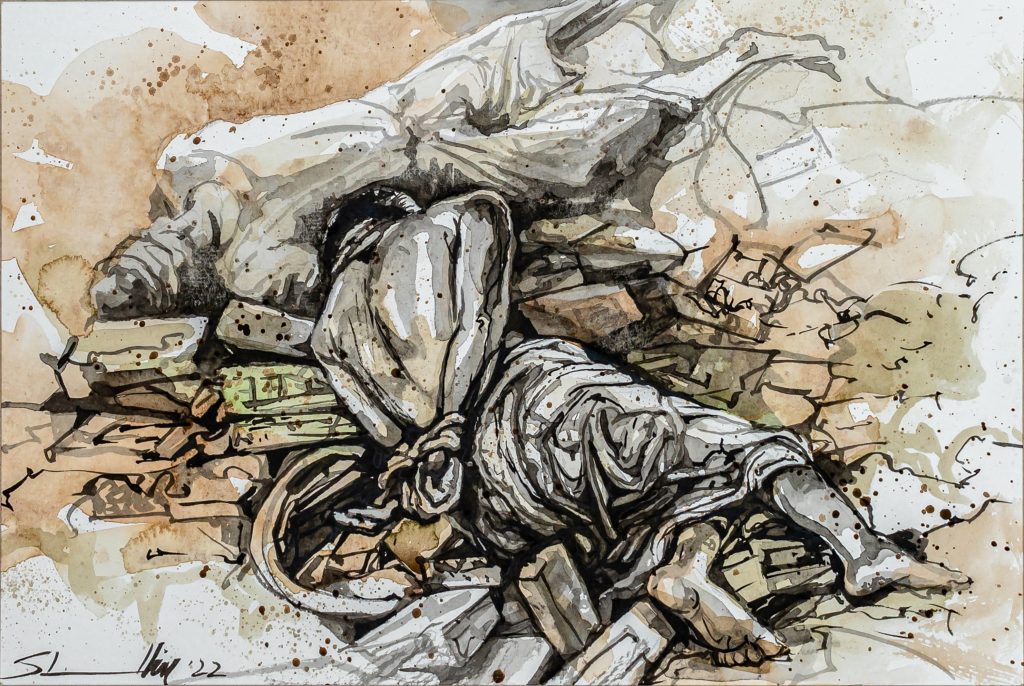
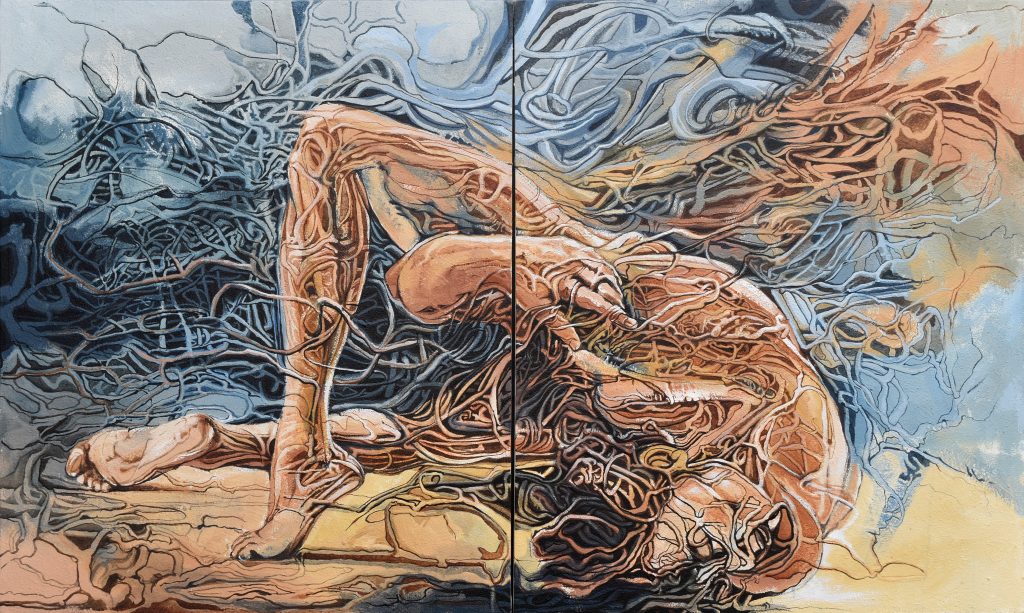
The environment, the aesthetic appeal of nature and humanity are his conceptual proclivity in his works. The Rajshahi University alum states, “People, aware or unaware, negatively contribute towards natural disasters. To create more awareness on matters of such importance, my works often feature themes of ‘conserve the destruction’ or ‘conserve what remains’.” In response to an inquiry regarding his preferred mediums, the PhD aspirant expressed that while being a part of an academic institution for art, familiarity with all mediums whether it be pencil, charcoal, watercolour, oil paint, acrylics and so forth, is commonplace.
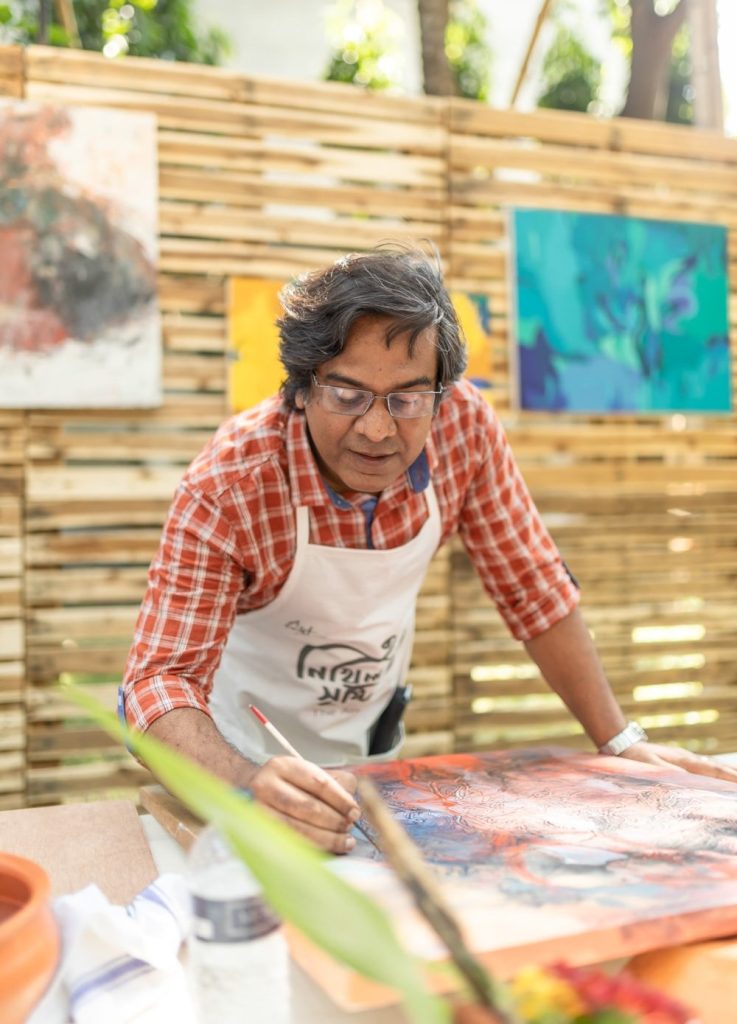
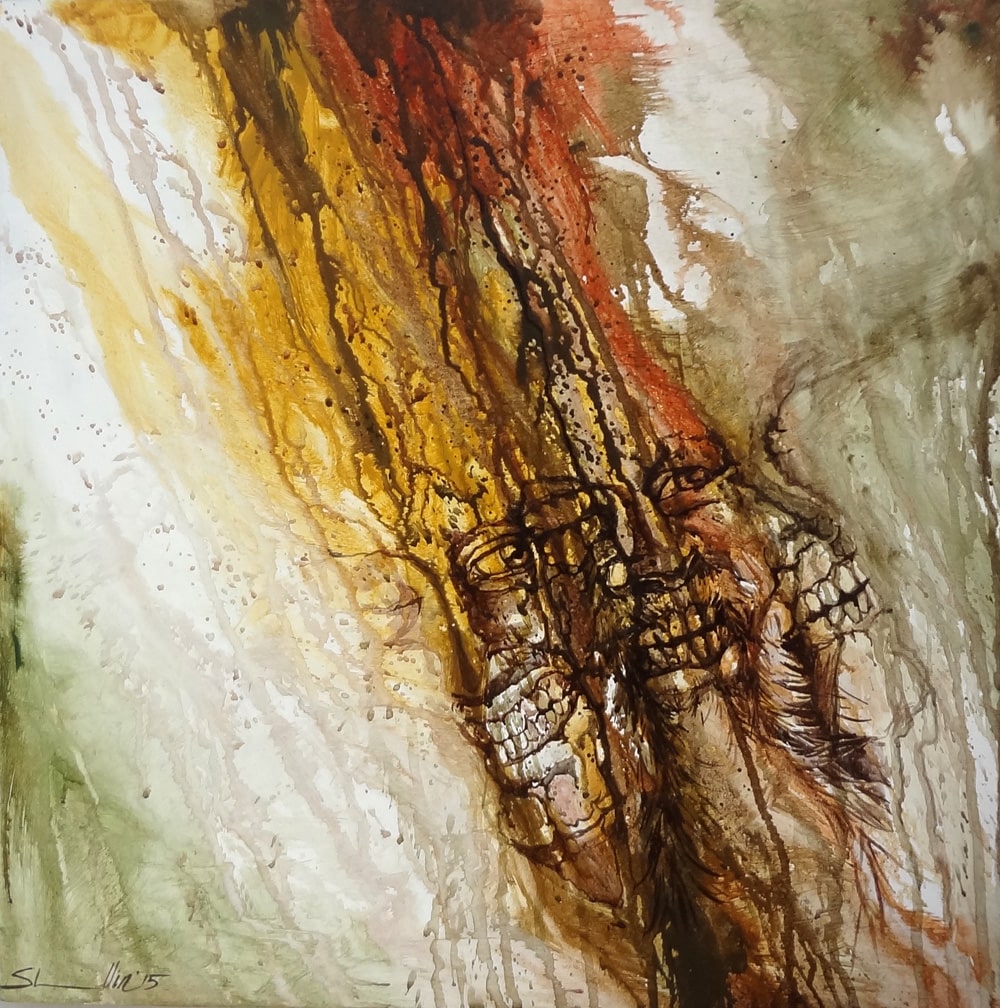
“While I have an attachment towards most mediums, I have a particular fondness for charcoals. I enjoy creating human centric art, portraits. I generally create my own concoction, with the base of acrylic, to which I add sand to create texture within.”
He reminisces about his childhood, which was overwhelmed with the natural beauty of lakes and rivers, something he believes is in a state of deterioration. Abu Kalam Shamsuddin notes that while, as one person it is beyond the realm of possibility to stop this decay, but as an artist he can make the sceneries of the past immortal through his art. Taking sand from the bed of river Padma, he pours it across his canvas, using eclectic methods to create a state of permanence. Abu Kalam Shamsuddin disclosed that it can take up to fifteen to twenty days to dry, and the process is layered. He then proceeds to paint the dried base with acrylic paint.
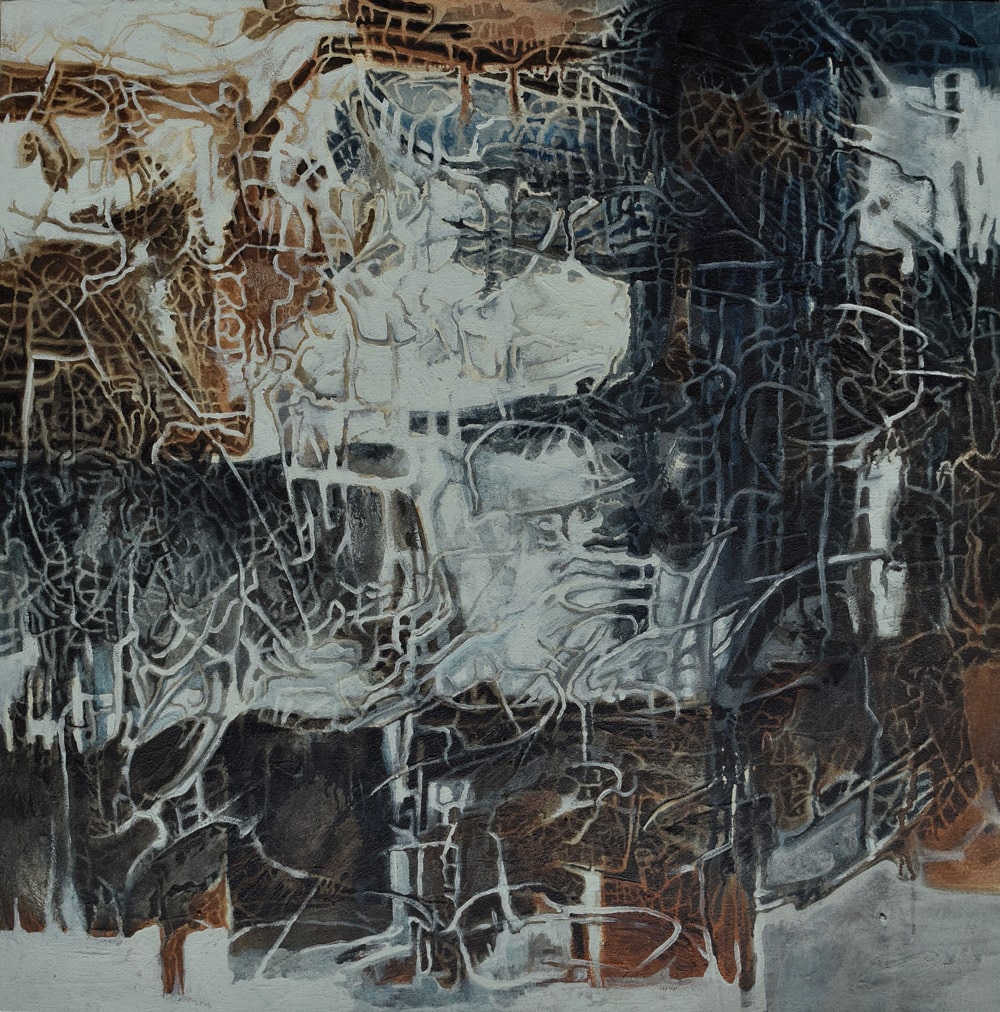
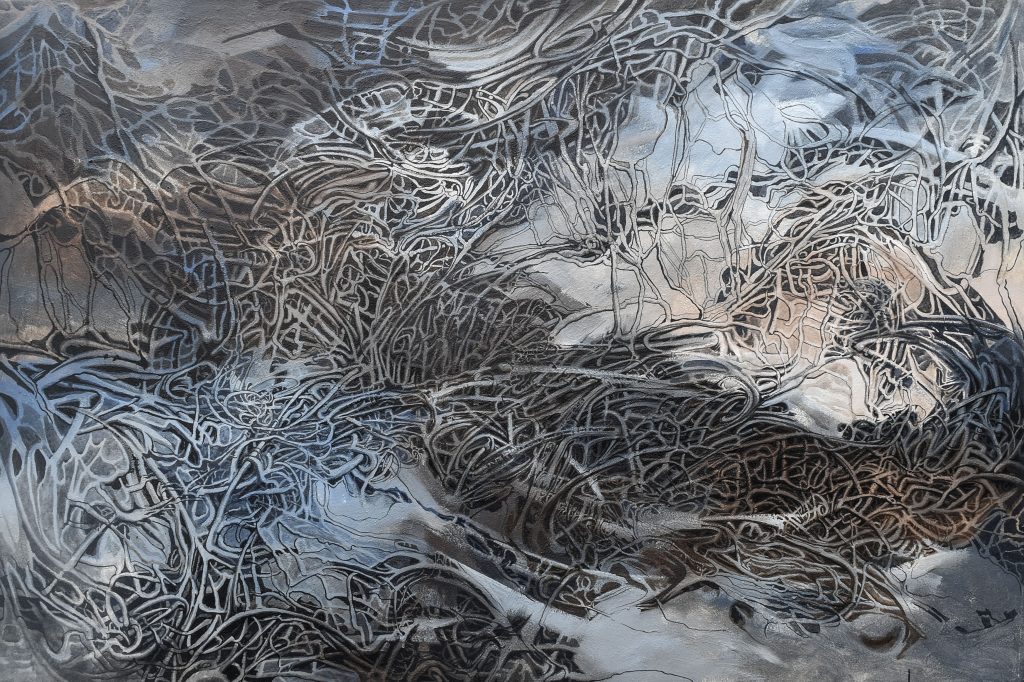
Describing one of his works, the artist notes that there is a sense of instability, discomfort within his piece, “which can be quite easily experienced just by looking.” He believes it to be the visual embodiment of mental health struggles, uncomfortable but often unseen.




